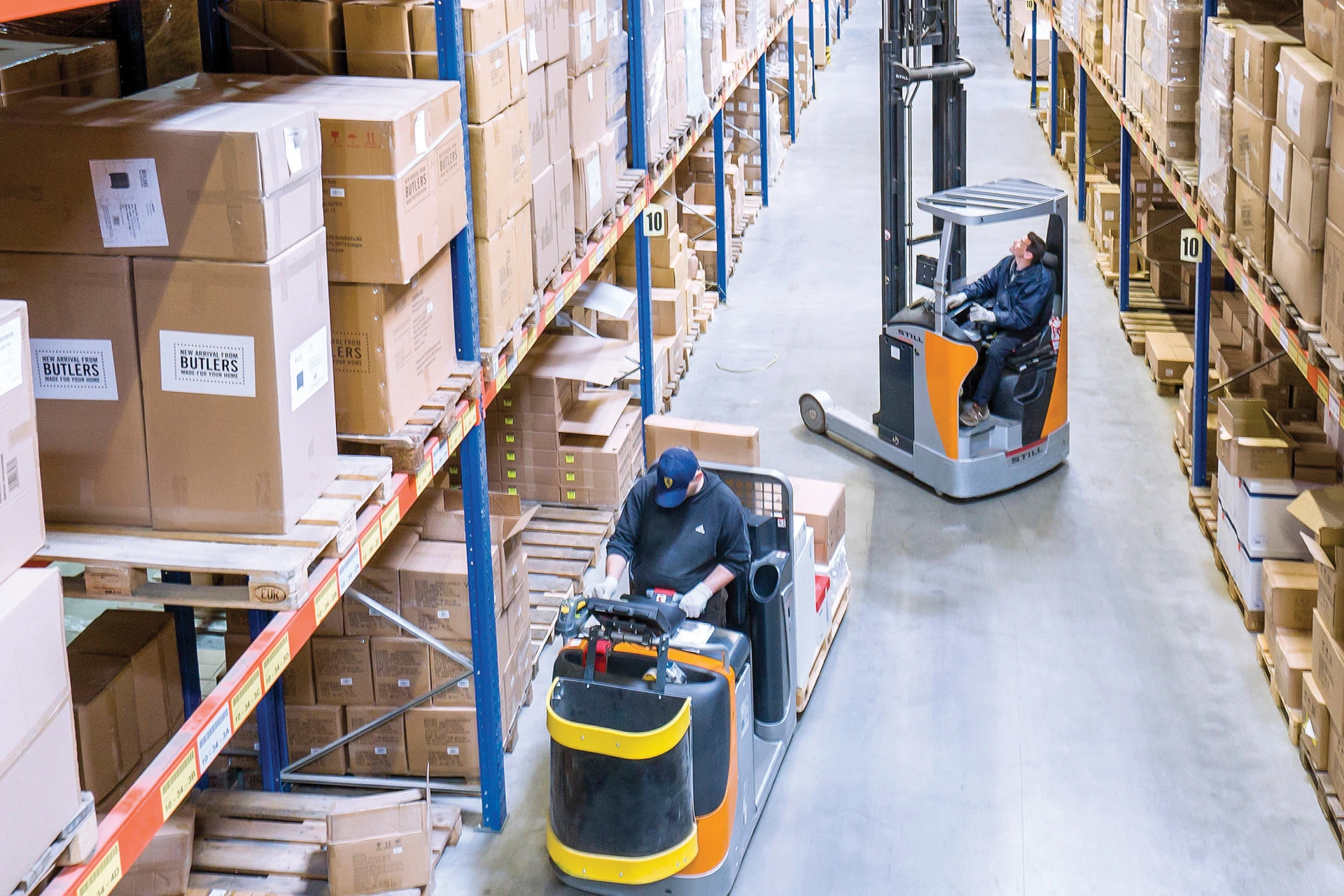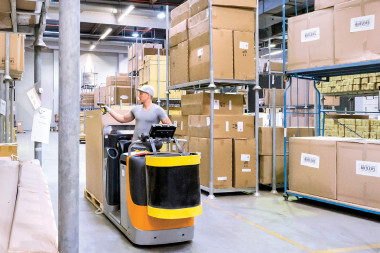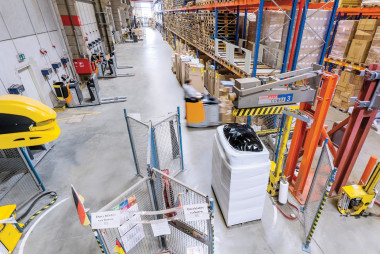BUTLERS
On course for expansion with their own brand
Challenge: A greater range of items and a larger network of branches was leading to increasingly complex logistical processes. Result: fleet not being utilised equally.
Solution: Material flow analysis and fleet consultation. Integral fleet concept
STILL products: STILL Lifecycle fleet

Because of our constantly changing collections, cost-effective and seamless in-house logistics are important, particularly when trading in decorative items, gifts and lifestyle products. For this reason, picking and transport for the European business of the Cologne-based trading company Butlers was also analysed and redesigned at the company's central distribution warehouse in Neuss, in collaboration with the intralogistics experts STILL. Using a smart fleet concept, the forklift trucks were standardised and the availability of the equipment was increased significantly at the same time as reducing the fleet from 65 to 55, meaning running costs were reduced.
With around 150 branches and counting, both in Germany and abroad, the Butlers brand is looking to expand in Europe. The home brand is currently undergoing interesting changes as a result of its success online at www.butlers.com, which was given a comprehensive relaunch last June. Additional ranges such as furniture, which are too large to be displayed in the branches, are sold on the website and are additionally marketed in comprehensive catalogues using a cross-channel concept. Turnover from distance selling will also be generated in the shops.
Growth calls for reform of the forklift fleet
Over the years, requirements in the central distribution warehouse have become more and more complex due to a larger product range and a larger number of branches in Europe. The average age of the fleet was around ten years, with the industrial trucks getting older all the time, and an ever greater variety of models being added. This led to increased rates of malfunction. As a result, the fleet was not being utilised equally. To continue to guarantee punctual delivery, additional forklift trucks had to be rented for additional staff at peak times.
Logistical processes viewed as a whole
Due to the frequent repairs and downtime, the old forklift trucks were disproportionately expensive and often not available. The aim of the fleet consultation was therefore to improve the availability and ergonomics of the truck fleet and reduce running costs whilst also improving handling performance.
Together with the STILL consultation team for intralogistics, all the logistical processes were looked at holistically as part of an analytical process over a short but intensive period. The experience of the STILL Project Leader, Marina Hein, was particularly valuable in this regard: “When analysing the current situation, we first collected, evaluated and described figures and data relating to the logistical processes. At the second stage, concepts were developed and discussed together with Wolfgang Frank, the Logistics Manager of Butlers. It wasn't just the trucks that were analysed, but also the processes in the incoming goods department, the online warehouse and main warehouse, palletising, transport, handling of empties and management of small items.“ The result of these intensive discussions was a fleet concept tailored to Butlers' requirements.
Smart fleet concept pays off
Wolfgang Frank: “With the Lifecycle fleet from STILL, we get trucks that are in almost mint condition, including maintenance and servicing. We can respond flexibly to seasonal order peaks with additional forklift trucks from STILL with full-service leasing. All operations are handled seamlessly using the trucks.“ Marina Hein adds: “Thanks to our large and varied fleet, we can almost always provide the right equipment.“ The use of ergonomic, standardised trucks capable of adapting to the necessary processes made it possible to reduce the number of forklift trucks by 15%. “The staff that are freed up can be utilised elsewhere. And as yet we haven't seen higher levels of damage due to the staff-related transfers of the forklift trucks,“ Wolfgang Frank added. When assembling the Lifecycle fleet, the technical state of the used trucks is first ascertained by the STILL service technicians. After the trucks have been cleaned, worn parts have been removed, the drive battery has been regenerated, the trucks have been painted and final assembly has been carried out, a quality check is performed.
Increased availability of the fleet of trucks
Items from postcards to three-metre-wide pieces of furniture are transported using the STILL industrial trucks. Every day, up to 15,000 items in the pallet warehouse and up to 120 pieces of furniture on the movable racks in the block warehouse are called at and picked. Previously, the batteries had to be changed every eight hours. Now, the new batteries last for at least two days. Due to the reliability of the forklift trucks and the improved charging capacity of the batteries, availability has also increased significantly.
Optimal servicing and maintenance
“We are very satisfied with the quick service from STILL. The response times of the mechatronics engineers at STILL are short, and repair works are carried out swiftly. And if a truck does malfunction, we can respond flexibly using the reserve trucks from STILL,“ says Wolfgang Frank. There are no additional costs in the event of a warranty claim, and otherwise work is billed by the hour.
Improved ergonomics of the forklift trucks
It was possible to carry out certain optimisation measures to standardise many truck types, in particular the driver seated reach truck by FM-X trucks, the order pickers by EK-X vertical order pickers and CX-M horizontal order pickers by STILL. All the types of truck have comfortable access and improved back support. For delicate items such as fabrics, glass or recording media, additional storage containers are attached to the order pickers to keep the goods safe in the event of minor impacts.
Summary
In a constantly changing market, the proportion of online sales within the mail-order business will continue to grow in the coming years. At Butlers, therefore, decisiveness and short communication paths at the central distribution warehouse will continue to be vital in future. By reducing the range of models and increasing the charging capacity of the batteries, the availability of the forklift trucks has been significantly increased. This has made it possible to reduce the fleet by 15%. Wolfgang Frank: “Optimising the fleet - including its processes - has been completely worthwhile. The drivers feel more comfortable than before thanks to the improved ergonomics of the STILL trucks. All in all, deliveries are made more rapidly and cost-effectively.“



